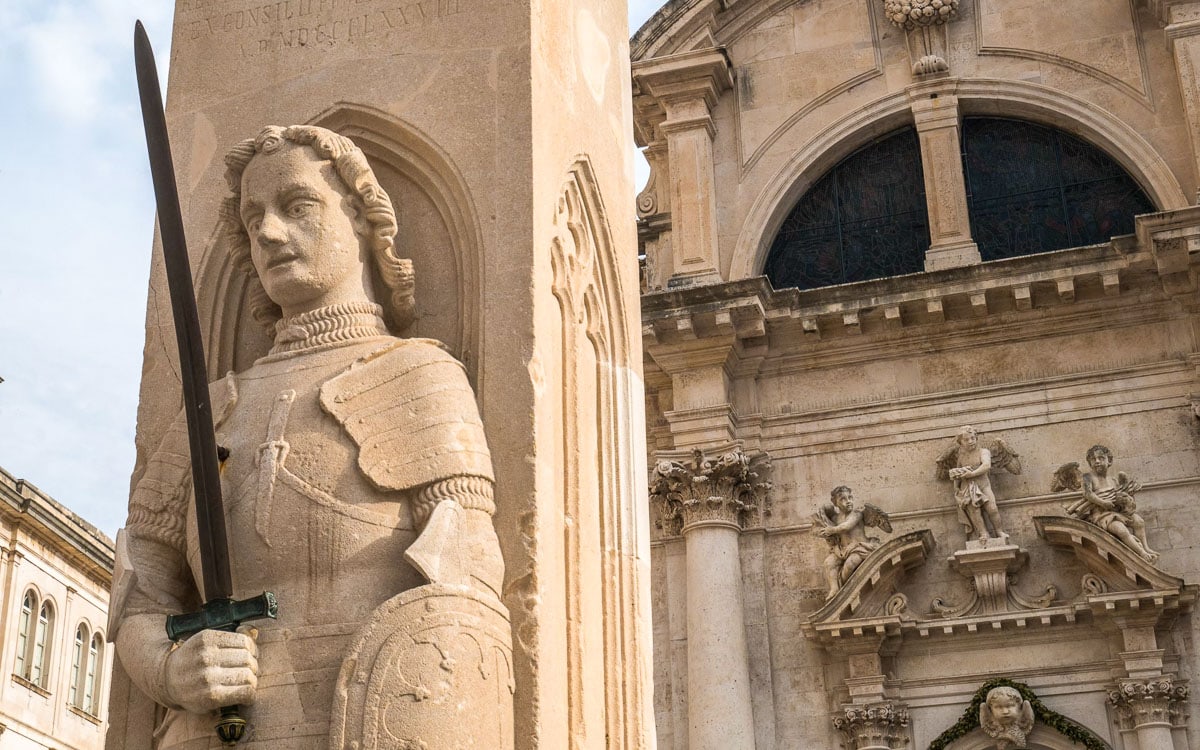
In the center of Luža Square, on the eastern end of Stradun, is Orlando’s Column, a historic stone monument dating back to 1418. Carved into the statue is a heroic medieval knight who defended Dubrovnik from invaders.
In 1418, Bonino di Jacopo, an Italian master sculptor from Milan, built the column with the help of local sculptor Antun Dubrovčanin.
The statue depicts a knight known as Orlando in Italian or Roland in French. Roland is famous in medieval literature, particularly in the French epic poem ‘Song of Roland’ (‘Chanson de Roland’).
In the poem, the knight Roland is a legendary hero celebrated for his bravery and heroic deeds. According to legend, Roland saved Dubrovnik from invaders in a battle near Lokrum Island.
Though the legend was not true, the myth of Roland spread across Dubrovnik over time. This resulted in the construction of the column, symbolizing the city’s freedom, independence, and protection from invaders.
The column, about 5 meters (16.4 feet) tall, features Orlando holding a sword and shield, symbolizing protection and bravery.
During the Republic of Ragusa, citizens used Orlando’s right forearm as a standard unit of measurement, known as the ‘lakat.’
Merchants used this length, 51.25 cm, to measure fabric and other commodities, highlighting the column’s essential role in the city’s commercial activities. The measurement is also marked on the base of the column.
Other than commercial activities, the small platform on the column saw civic and governmental proclamations. Announcements made included legal decrees, public notices, and judicial sentences.
During events, including the Dubrovnik Summer Festival and the Feast of St. Blaise, the Libertas flag is flown atop the column, symbolizing the city’s independence and freedom.
Orlando's Column Information
Map
Nearby Sights
Church of Saint Blaise
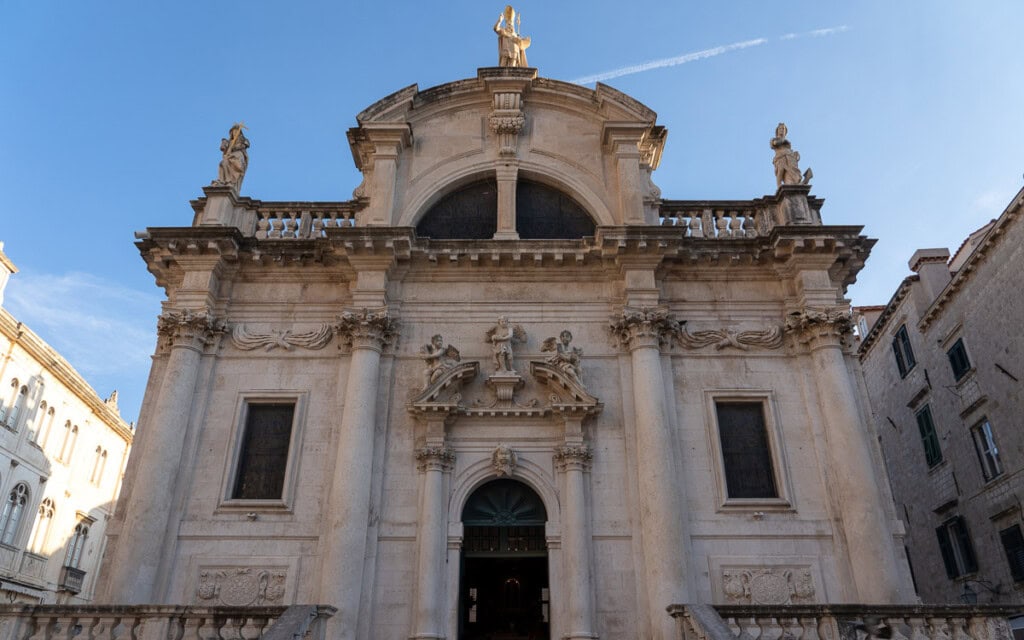
The Church of Saint Blaise, located on the eastern end of Stradun, is one of the most iconic and famous landmarks in Dubrovnik, Croatia. The church, dedicated to Saint Blaise, the patron saint of Dubrovnik, dates back to the early 18th century. A Romanesque church stood at this location from the 14th century until the middle of the 17th century.
Small Onofrio Fountain

Located at the eastern end of Stradun, off Luža Square, is the historic Small Onofrio Fountain, an ornately decorated octagonal fountain. The small fountain, often overlooked by tourists, played an essential role in the history of Dubrovnik's water supply. Italian architect Onofrio della Cava designed and constructed the fountain between 1440 and 1442.
Marin Držić Statue
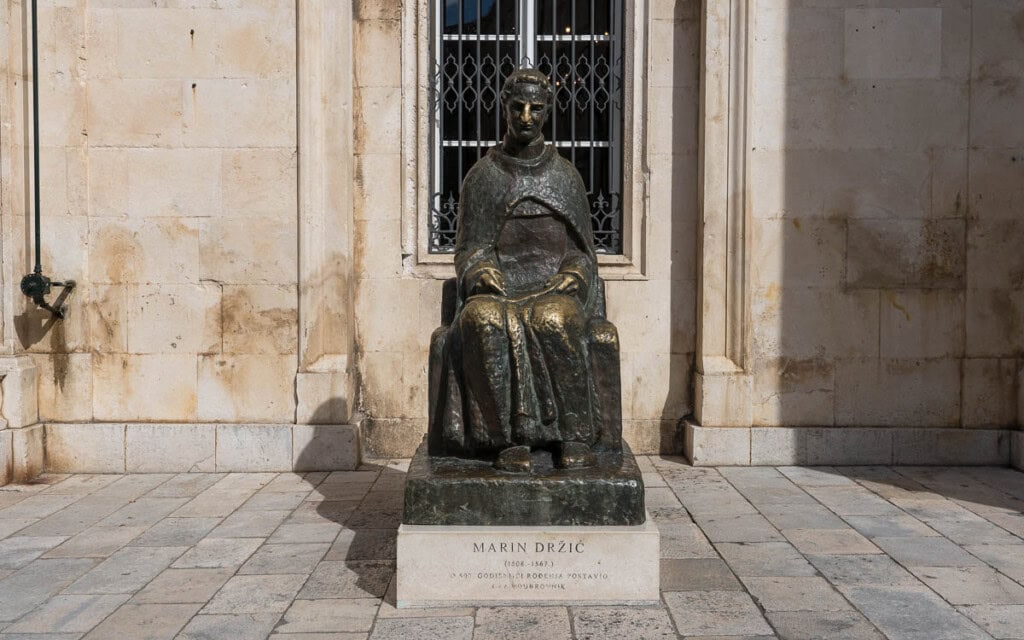
At the eastern end of the Stradun, across the street from the Church of Saint Blaise, is the bronze Marin Držić Statue. At the bottom of the seated statue is a plaque that reads "MARIN DRŽIĆ (1508-1567) - On the occasion of the 500th anniversary of his birth - City of Dubrovnik."
Stradun
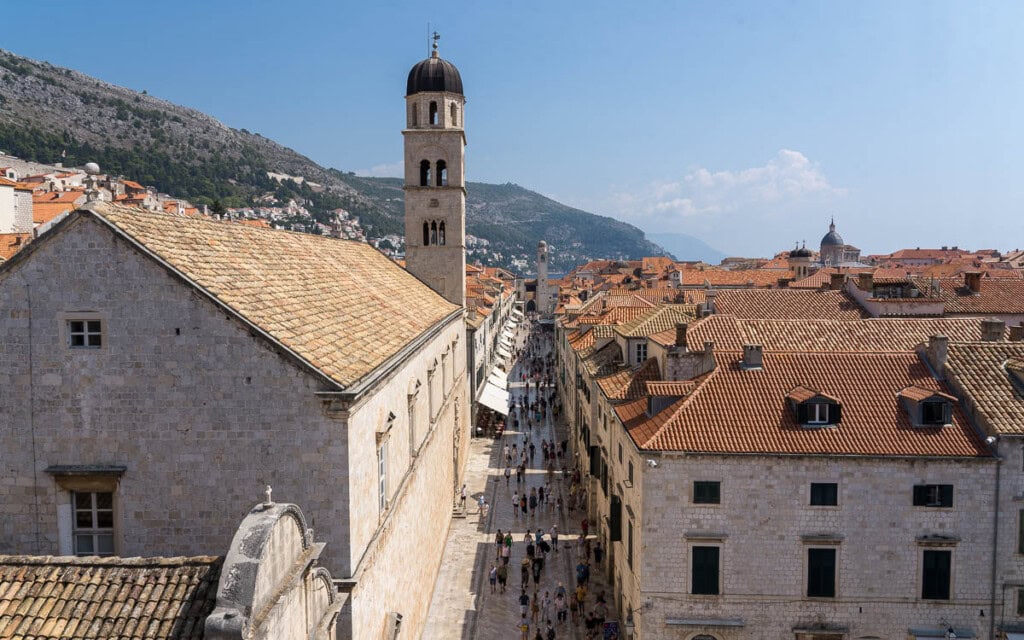
Stradun, officially Placa, is Dubrovnik's main street, stretching 300 meters from Pile Gate in the west to Luža Square in the east. Along the limestone-paved street, which cuts through the heart of Dubrovnik, are many historical sights, restaurants, bars, cafes, and shops. Along Stradun, you will find some of Dubrovnik's most important sites, including the Large Onofrio Fountain, Sponza Palace, the Church of Saint Blaise, and Dubrovnik Bell Tower.
Jesuit Stairs
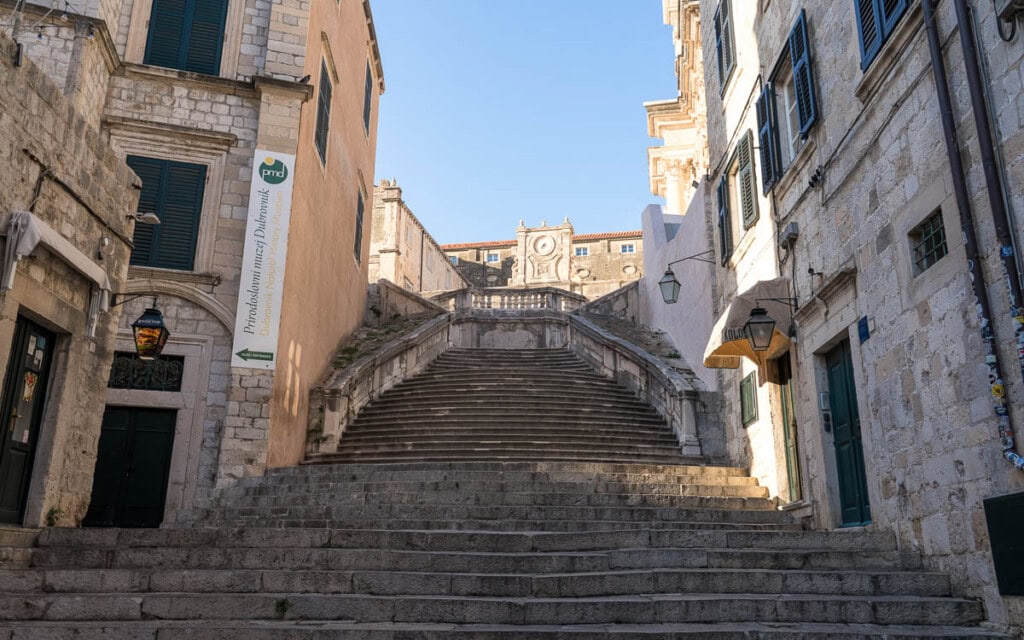
The Jesuit Stairs are a grand Baroque staircase that connects Gundulić Square to the Church of St. Ignatius in Old Town Dubrovnik, Croatia. The Church of St. Ignatius, at the top of the stairs, is an old church that once belonged to Collegium Ragusinum, a Jesuit college in Dubrovnik. The stairs are considered one of the city's most notable examples of Baroque architecture.
Ploče Gate

Ploče Gate is a 14th-century Romanesque-style gate that serves as the entrance to Dubrovnik's Old Town and its main street, Stradun. While Pile Gate is the main entrance on the western side, Ploče Gate, also known as Vrata od Ploča, once played a key role in the city's defenses and today serves as the main entry point into the Old Town from the east.